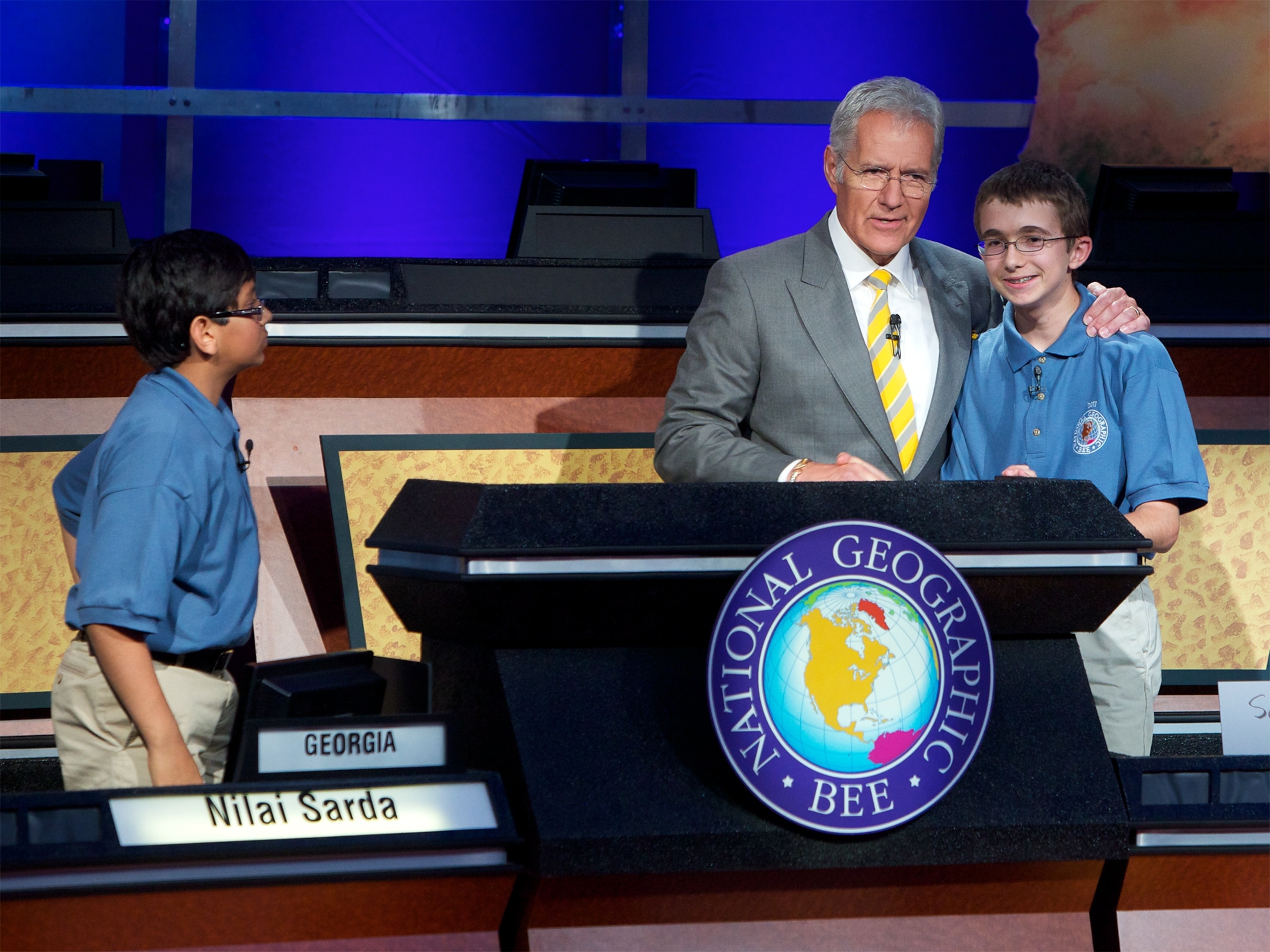
National Geographic Bee Won on Everest Stumper
Well-prepped contestants make 2011 Bee among the longest.
Doing his home state proud, seventh grader Tine Valencic scored a Texas-size victory in Washington, D.C., on Wednesday, winning the 2011 National Geographic Bee.
(Listen to a post-Bee radio interview with Valencic from National Geographic Weekend.)
With the well-prepped contestants acing geography questions over and over, it was especially tough to narrow the field in the 23rd annual finals, resulting in one of the longest National Geographic Bees yet.
As in previous years, the Bee was held at National Geographic headquarters and moderated by Alex Trebek of Jeopardy!
Thirteen-year-old Valencic, of Texas's Colleyville Middle School, sailed through his portion of the 119 questions and won it all during a tie breaker featuring 5 final stumpers.
The final question: "Thousands of mountain climbers and trekkers rely on Sherpas to aid their ascent of Mount Everest. The southern part of Mount Everest is located in which Nepalese national park?" Answer: Sagarmatha National Park.
Valencic will get a U.S. $25,000 college scholarship, a lifetime membership in the National Geographic Society, and a trip to the Galápagos Islands. (See pictures of Galápagos animals.)
Second- and third-place winners 11-year-old Nilai Sarda of Georgia and 13-year-old Stefan Petrović of Kansas will receive $15,000 and $10,000 college scholarships, respectively.
"We want all kids to be curious about the world, and these kids could be our role models," said National Geographic Bee Director Mary Lee Elden. (The National Geographic Society owns National Geographic News.)
The spelling bee-like competition was founded in 1989 in response to the perceived lack of geographic knowledge among young people in the U.S. (See the results of a 2006 survey of geographic literacy in the U.S.)
(See "Singing 13-Year-Old Wins National Geographic Bee [2010].")
Jane Goodall, Pac-man Frog Add Buzz to Geographic Bee
Before the national competition this week, 54 semifinalists had emerged from the roughly five million fourth- to eighth-graders who competed in geography bees held in all 50 U.S. states; Washington, D.C.; the U.S. Atlantic and Pacific territories; and Department of Defense Dependents Schools.
The ten finalists who survived Tuesday's D.C.-based semifinals competed in Wednesday's finals, in which each contestant was allowed two mistakes before being disqualified.
The questions themselves were presented in a variety of formats. Some brainteasers incorporated Google Earth—Google sponsored the Bee finals for the third year. Other questions incorporated video messages from chimpanzee expert Jane Goodall and U.S. Secretary of State Hillary Rodham Clinton.
Clinton, for instance, asked questions related to world capitals she'd visited on diplomatic trips in 2010.
Two animals also made guest appearances, including Cornelius, a frog of the so-called Pac-Man species, which is said to eat pretty much anything. A contestant correctly identified the frog's habitat—west of the Uruguay River in the Entre Ríos Province—as being in Argentina.
A species of cuscus—a mammal with opposable digits and a prehensile tail—accompanied a question about its home, the island of New Britain. Contestants were asked what country, west of the Solomon Islands, the island is in. Answer: Papua New Guinea.
Geographic Bee Win a Childhood Dream
For Valencic, winning the National Geographic Bee has been a childhood dream.
"When he found out about the geography bee, he said, That's what I want to do," said his mother, Jana Valencic. "He was too young to do it when he was in the second grade, so we had to wait until the fourth."
To prepare, Jana and her son created a spreadsheet with facts about every country. Valencic also had plenty of practice at the Texas Geography Bee, where he and his competitors got so many answers right the officials ran out of questions.
(Download the National Geographic GeoBee Challenge app, free through Thursday.)
"I had a very supportive family and a very supportive school," a teary-eyed Valencic said on the stage after the Bee win, surrounded by cameras.
For now, though, he's soaking up the spotlight—and has no plans for his next challenge.
"I'll think about that later."
Hear a radio interview with the Bee winner on National Geographic Weekend (where and when to listen). A TV special on the National Geographic Bee will premiere on the National Geographic Channel on June 13.





